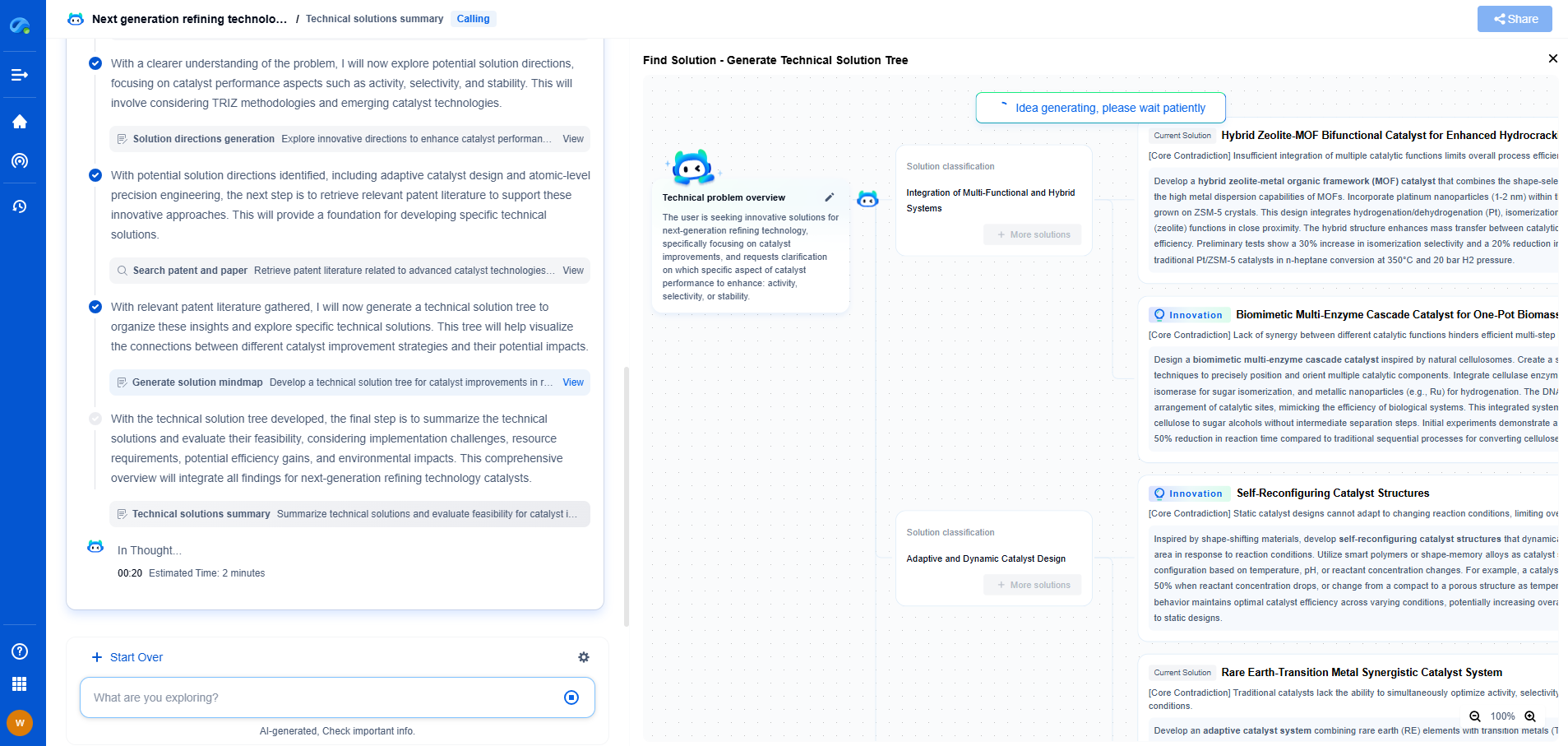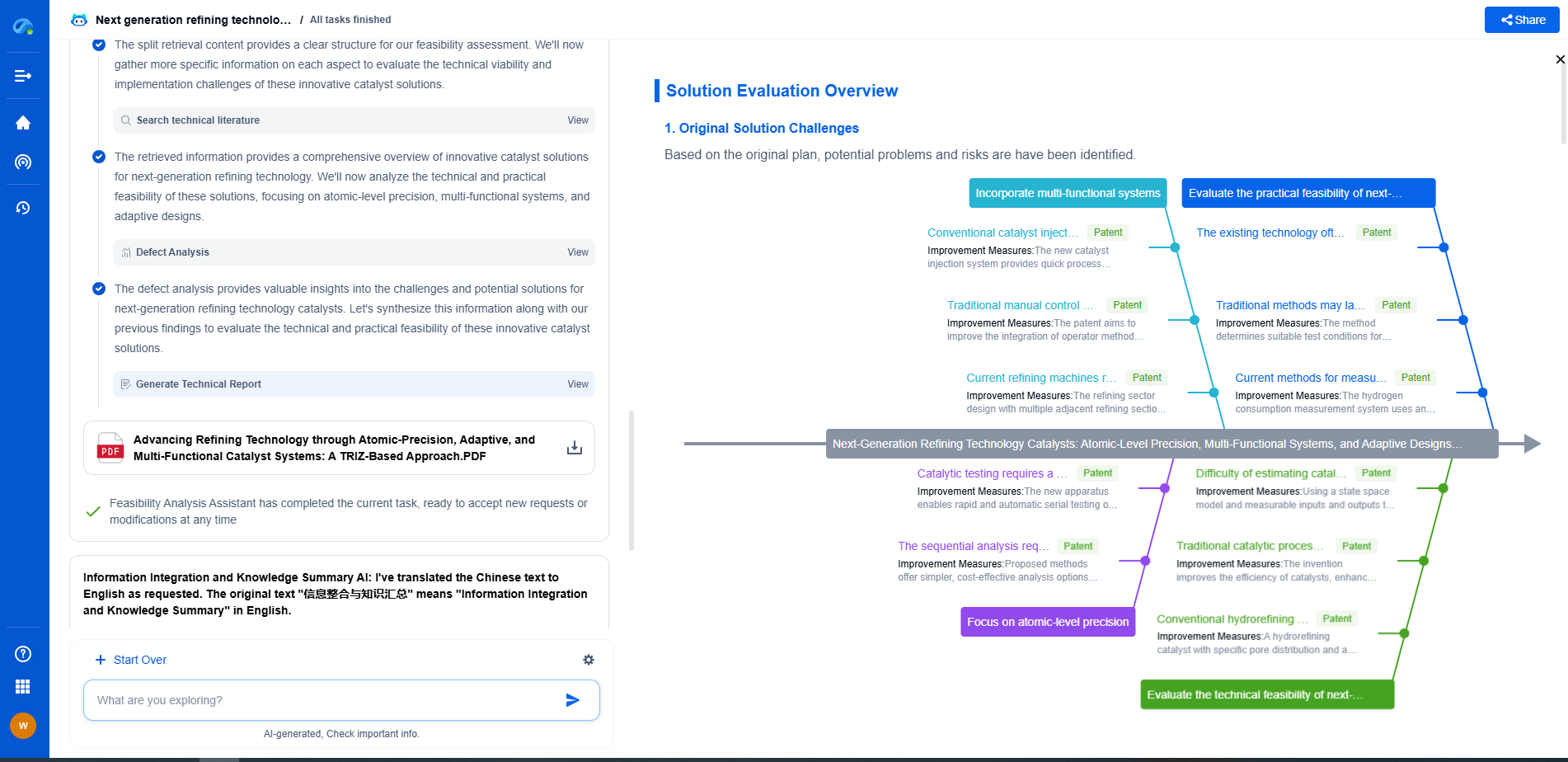Cryogenic Pipe Support Installation: Cold Shoe vs. Spring Hangers
JUL 21, 2025 |
In the realm of cryogenics, where temperatures plunge to extreme lows, ensuring the integrity and stability of piping systems is crucial. Cryogenic piping transports substances at sub-zero temperatures, making it susceptible to unique challenges not present in standard piping systems. Two primary types of support systems are employed in these scenarios: cold shoes and spring hangers. Each has its specific applications, benefits, and drawbacks, which we'll explore in detail.
The Role of Cryogenic Pipe Supports
Cryogenic environments present challenges such as thermal contraction, frost heave, and potential embrittlement of materials. Proper support systems are essential to counter these issues, ensuring safety, functionality, and efficiency. The choice between cold shoe supports and spring hangers often depends on several factors, including the type of material being transported, the environmental conditions, and the specific requirements of the piping system.
Cold Shoe Supports: A Closer Look
Cold shoe supports are specially designed to manage the extreme temperature differential found in cryogenic applications. These supports are typically composed of a combination of insulating materials and structural components that cradle the pipe while minimizing heat transfer. Key features include:
Insulation: Cold shoes employ high-performance insulating materials to prevent frost heave and condensation. This insulation maintains the temperature of the cryogenic fluid and minimizes thermal bridging, which can lead to energy loss or pipe damage.
Load Distribution: By distributing the load evenly across the pipe support structure, cold shoes help maintain the pipe's alignment and structural integrity. This is essential in preventing undue stress that could lead to cracks or fractures.
Material Selection: The materials used in cold shoe supports are carefully selected to withstand harsh cryogenic conditions without compromising performance. Stainless steel and other durable alloys are common choices due to their strength and resistance to low-temperature embrittlement.
Spring Hangers: Flexibility and Support
Spring hangers offer another solution for cryogenic pipe support, providing flexibility and dynamic response to movement within the system. These supports feature springs that absorb vibrations and accommodate thermal expansion and contraction. Key benefits include:
Dynamic Load Management: Spring hangers are adept at handling dynamic loads, such as those caused by sudden pressure changes or external vibrations. This flexibility prevents mechanical failure and prolongs the lifespan of the piping system.
Thermal Expansion Accommodation: As pipes contract and expand with temperature fluctuations, spring hangers adjust to these changes, maintaining consistent support. This minimizes stress on pipe joints and connections, reducing the risk of leaks.
Versatility: Spring hangers can be customized to meet specific load and movement requirements, making them suitable for a wide range of applications beyond cryogenics. This adaptability is particularly advantageous in complex piping systems with varying demands.
Choosing Between Cold Shoes and Spring Hangers
Selecting the appropriate support system for a cryogenic application requires careful consideration of various factors. Here are some guidelines to help determine which option might be best suited for a particular situation:
Temperature Sensitivity: If minimizing heat transfer and preventing frost build-up are primary concerns, cold shoe supports are likely the preferable choice due to their superior insulating properties.
Dynamic Movement: In systems subject to significant thermal expansion or external vibrations, spring hangers offer the necessary flexibility and dynamic response, reducing stress and potential damage.
Installation and Maintenance: Consider the ease of installation and ongoing maintenance requirements. Cold shoes may involve more complex installation procedures due to their insulation components, whereas spring hangers offer relatively straightforward setup and adjustments.
Cost Considerations: Budget constraints also play a role in decision-making. While spring hangers might be more cost-effective initially, the long-term energy savings and reduced maintenance of cold shoes could present significant cost benefits over time.
Conclusion
Both cold shoe supports and spring hangers serve critical roles in maintaining the integrity and efficiency of cryogenic piping systems. The choice between them hinges on the specific demands of the environment and the operational requirements of the system. By understanding the unique advantages and limitations of each support type, engineers and designers can make informed decisions that promote safety, performance, and longevity in cryogenic applications.
As clean energy and decarbonization drive new breakthroughs in hydrogen storage, CO₂ transport, and alternative gas carriers, keeping pace with technical trends and patent activity is critical to staying competitive.
Patsnap Eureka helps innovators in compressed gas storage, high-pressure tank design, gas sensor systems, and pipeline materials accelerate research by offering instant, AI-powered insights into global patents, related technologies, and emerging white spaces.
🚀 Bring speed, precision, and strategic foresight to your innovation and IP decision-making in the gas transport sector—try Eureka today and unlock a smarter path forward.
- R&D
- Intellectual Property
- Life Sciences
- Materials
- Tech Scout
- Unparalleled Data Quality
- Higher Quality Content
- 60% Fewer Hallucinations
Browse by: Latest US Patents, China's latest patents, Technical Efficacy Thesaurus, Application Domain, Technology Topic, Popular Technical Reports.
© 2025 PatSnap. All rights reserved.Legal|Privacy policy|Modern Slavery Act Transparency Statement|Sitemap|About US| Contact US: help@patsnap.com

